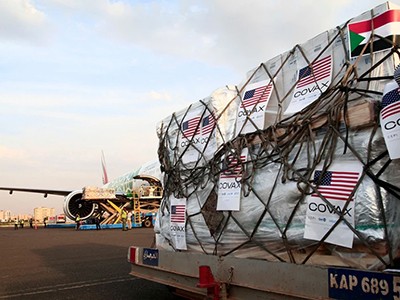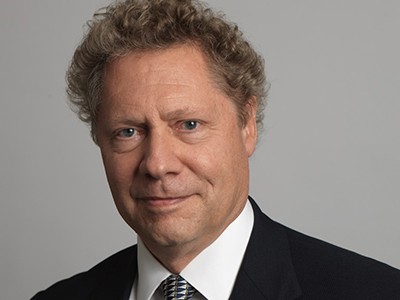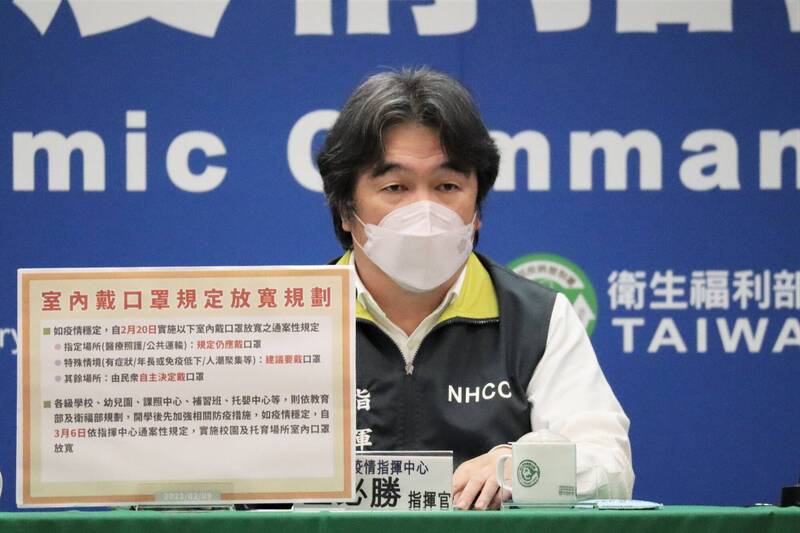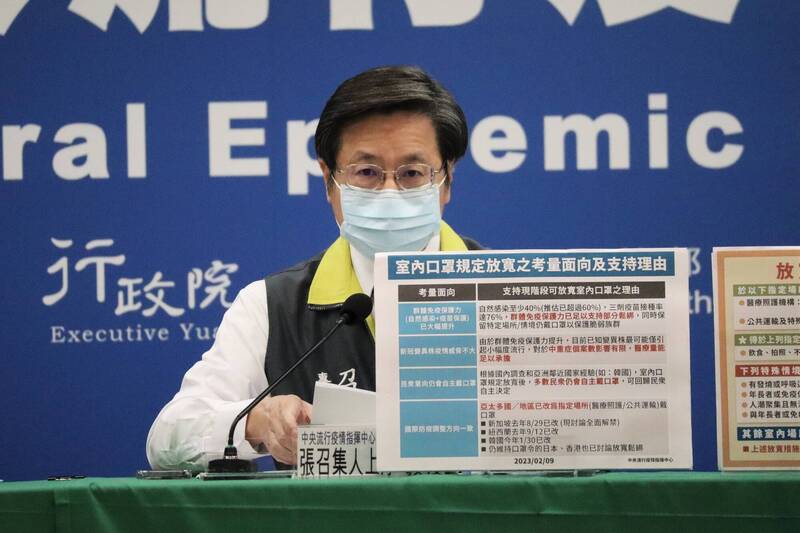The World Health Organization has warned the world must prepare for a potential human bird flu pandemic — after the strain jumped from birds to mammals.
Cases of the strain H5N1 have already been reported in otters, mink and foxes, sparking fears the virus is one step closer to sweeping into humans.
During a virtual briefing today, the WHO's director-general Tedros Adhanom Ghebreyesus urged nations to monitor infections in mammals closely.
He said the risk of the virus jumping to humans was still low, but we 'cannot assume that will remain the case and we must prepare for any change in the status quo'.
It comes after the UK reported that its biggest-ever avian influenza outbreak had spilled over to mammals. There was also an outbreak among mink in North West Spain reported last month.
H5N1 has previously been detected in people, but cases have been sporadic and closely linked to close contact with infected dead or live birds.
The virus does not infect humans easily or other mammals.
News (2)
Bird flu could gain mutations enabling it to jump to humans
However reports of infections in mammals have raised concerns that the pathogen could gain mutations that make it easier for the virus to jump to humans, helping it to clear the biggest hurdle that has stopped it from sweeping the world.
Leading experts previously warned that the spread of bird flu poses a global risk until it is brought under control.
The US has faced a major outbreak of bird flu this year, with more than 58million poultry affected across nearly every state in the country and 6,100 in wild birds — approaching record levels for the country.
News (3)
Bird flu outbreaks among mink could lead to a hybrid virus
Experts have warned that outbreaks among mink could lead to a recombination event — when two viruses switch genetic material to make a new hybrid.
A similar process is thought to have caused the global 2009 swine flu crisis that infected millions across the planet.
The same biological phenomenon was also seen during the covid pandemic, such as the so-called Deltacron — a recombination of Delta and Omicron, first detected in France last February.
News (4)
Bird flu could merge with influenza, triggering the next pandemic
For decades, scientists have warned that bird flu is the most likely contender for triggering the next pandemic.
This could see a deadly strain of bird flu merge with a transmissible seasonal flu.
News (5)
The first bird flu outbreak among mink happens in Spain
The mink outbreak occurred on a farm in Galicia, north-west Spain, in October which housed 52,000 of the animals.
It was only spotted after a sudden surge in the animals dying. Up to four percent died in one week during the course of the outbreak, which was declared over by mid-November.
Farm vets swabbed the minks and the samples were analyzed at a Government lab, where they tested positive for H5N1.
News (6)
Measures taken to control the bird flu outbreak among mink
It led to all of the animals being culled, farm workers isolating for 10 days and heightened security measures in farms across the country.
These included wearing face masks and disposable overalls and showering before leaving the premises.
News (7)
H5N1 virus has gained a dozen mutations
Analysis of samples taken, which were published last month in the infectious disease journal Eurosurveillance, show the virus had gained nearly a dozen mutations — most of which had never or rarely been seen before in bird flu strains.
One was previously seen in the virus behind the 2009 global swine flu pandemic.
News (8)
Otters and foxes were infected with bird flu in the UK, humans could not be spared
In the UK, a December report showed four samples from the infected otters and foxes 'show the presence of a mutation which is associated with potential advantages for mammalian infection'.
The UKHSA warned that the 'rapid and consistent acquisition of the mutation in mammals may imply this virus has a propensity to cause zoonotic infections' — meaning it could potentially spread to humans.
News (9)
A drug widely used to treat COVID-19 might be spurring the evolution of new SARS-CoV-2 variants.
The drug, molnupiravir, works by introducing a flurry of mutations to the viral genome; this helps to clear infections. But a study1 of more than 13 million SARS-CoV-2 sequences has uncovered sequences that bear molnupiravir’s fingerprints. The study’s authors say the results suggest that molnupiravir treatment has sparked the evolution of viral lineages carrying numerous mutations that, in at least some cases, have the capacity to spread to other individuals.
The study was posted on the medRxiv preprint server in January. It has not yet been peer reviewed.
“Whether this should be of concern — that is an open question,” says Jesse Bloom, an evolutionary virologist at the Fred Hutchinson Cancer Research Center in Seattle, Washington. Mutations to the SARS-CoV-2 genome can help the virus to evade immunity and become more transmissible, but most mutations are likely to harm it.
News (13)
Molnupiravir mimics some of the building blocks of RNA, the genetic material in SARS-CoV-2
Molnupiravir was developed by the pharmaceutical giant Merck, based in Rahway, New Jersey, and was authorized by regulators in the United States and United Kingdom in late 2021, and in Australia in early 2022. A company-sponsored clinical trial found that the drug — a pill taken for five days — reduced hospitalizations and deaths in people at risk of severe COVID-19.
Molnupiravir mimics some of the building blocks of RNA, the genetic material in SARS-CoV-2. The drug peppers the viral genome with mutations, which add up to make SARS-CoV-2 worse at replicating. This results in a marked reduction in SARS-CoV-2 levels in infected human cells and hamsters2.
But scientists have raised the possibility that, in rare cases, molnupiravir treatment might not entirely eliminate SARS-CoV-2, allowing some individuals who have taken the drug to continue to transmit the virus.
News (14)
Ryan Hisner first discovers a number of covi variant lineages carried more mutations than the others
Those concerns were largely theoretical until Ryan Hisner, a US schoolteacher who is part of a loose-knit community of SARS-CoV-2 variant spotters, started noticing peculiar patterns in sequencing data from around the world: a number of lineages carried many more mutations than their nearest relatives. Most of the genetic changes were of the type induced by molnupiravir.
The researchers’ analysis of global sequences showed that the prevalence of the suspect lineages rose substantially in 2022, the first year molnupiravir was widely used. The lineages were also much more likely to show up in sequencing data from countries where the drug was used — the United States, the United Kingdom and Australia — than in data from countries that hadn’t approved it, such as France and Canada.
News (15)
Viral lineage in Australia carrying 25 mutations is related to molnupiravir
Where SARS-CoV-2 sequence data include the age of the individual sampled, the telltale lineages tended to have come from older people, who are more likely to take molnupiravir. In Australia, where molnupiravir was pre-placed in care homes, the researchers identified a viral lineage carrying 25 mutations that had infected at least 20 people, mostly in their eighties and nineties.
Among the lineages that showed molnupiravir’s influence, a few — including the one from Australia — were represented by multiple sequences, indicating that they were capable of spreading. “I would say that our work closes down the possibility that these viruses can never be transmitted,” says team member Theo Sanderson, a computational biologist at the Francis Crick Institute in London.
News (16)
Molnupiravir treatment is yieding highly mutated viruses with the capacity to spread
Evidence linking molnupiravir to the mutation-heavy sequences is “circumstantial”, Merck said in a statement. “The authors assume these mutations were associated with molnupiravir treatment without evidence the viral sequences were isolated from treated patients.”
Bloom thinks the researchers make a good case that molnupiravir treatment is yielding some highly mutated viruses with the capacity to spread. But it’s not clear whether this could contribute to new coronavirus variants, or whether it is simply creating weakling viruses that are unlikely to spread very far. “SARS-CoV-2 is already generating plenty of mutations even in the absence of drug treatment,” he adds.
Rustem Ismagilov, a quantitative bioscientist at the California Institute of Technology in Pasadena, says the study underscores the need to quickly measure any risk that molnupiravir poses in terms of sparking new variants, and to weigh them against the drug’s benefits. “If we are playing Russian roulette, we’d better know our odds.”
Sarah Otto, an evolutionary biologist at the University of British Columbia in Vancouver, Canada, says the paper is another blow to the continued use of molnupiravir. She notes that a large-scale UK study found that the drug had no effect on hospitalizations or deaths3. “Given the large-scale risks of this mutagen producing new variants faster, including variants that are immune evasive, I encourage public-health leaders to call for a global halt to its use,” Otto says.
Ref.: doi: https://doi.org/10.1038/d41586-023-00347-z
News (17) to (20) / Source : Nature 614, 195-196 (2023) / https://www.nature.com/articles/d41586-023-00339-z
News (17)
Global pandemic treaty: Learning from climate-change errors
The global response to COVID-19 represented a “catastrophic failure of the international community in showing solidarity and equity”. This frank assessment comes in the opening line of the first, or ‘zero’, draft of a new international pandemic agreement, published by the World Health Organization (WHO) last week. The agreement is intended to help the world to better prepare for future pandemics. Negotiations over the details are due to start later this month and are likely to last at least a year.
Although it doesn’t say so explicitly, the WHO’s statement can be read as a rebuke to the leaders of high-income nations, highlighting the fact that their response to the ongoing pandemic has not been a model of cooperation or compassion. A promise to properly support a vaccine-distribution scheme called COVAX went unfulfilled, undermining its potential. Rich countries over-ordered and hoarded vaccines, stopping them from reaching people in other countries who needed them. Some of the world’s best-known and well-respected pharmaceutical companies fought to stop intellectual property (IP) being shared. Had they not done so, more manufacturers could have produced vaccines and treatments, and more lives could have been saved. The treaty drafted by the WHO is intended to ensure that this behaviour is never repeated. But as Nature has argued before, a treaty on its own offers no guarantee that promises will be kept.
Waiving of applicable IP rights for a defined period duirng a pandemic
The draft text encourages the waiving of applicable IP rights for a defined period during a pandemic. In addition, at least one-fifth of relevant vaccines must be deposited with the WHO, to ensure that sufficient numbers reach the world’s poorest and most vulnerable people at the same time as they reach people in richer countries. Prices and contracts should be made public — something that didn’t happen during the COVID-19 pandemic, allowing countries to outbid each other for vaccines by offering higher prices that only pharmaceutical companies were a party to.

What the WHO’s new treaty could mean for the next pandemic
News (19)
The importance of open science and sharing of data is critical
The current wording also recognizes the importance of open science and the sharing of data such as viral genome sequences. Last month, the WHO urged China’s authorities to share sequence data, as well as information on cases, hospitalizations and vaccination rates. Another point emphasized in the zero draft is that countries that share their scientific knowledge — as many low-income countries did during the pandemic — should also share in the benefits.
All of this is necessary and overdue, and has the backing of scientists and campaigning organizations. But researchers are rightly concerned about the lack of clarity on how the treaty will work in practice, and how signatories will be held to their promises. The WHO recommends that countries make decisions through a conference of the parties (COP), a democratic forum in which all countries have an equal voice in decision-making.
But COPs are expensive to run, and the creation of such a framework would mean that the WHO — which faces a constant struggle to get countries to fund it properly — would struggle even more. COPs also take their time to reach decisions, as we know all too well from those governing international action on concerns such as climate change and biodiversity loss.
Perhaps most important of all, a forum of 200-odd countries, plus tens of thousands of observers and lobbyists, is, arguably, not the best way to ensure that an agreement is adhered to, especially when the onus for action lies with a relatively small number of high-income nations. There’s good evidence from the climate-change COP process that even legally binding agreements cannot compel nations to meet their commitments.

Even after COVID, the world’s vaccine strategy is failing
News (20)
WHO wants countries to agree on a shared monitoring system to avoid repeating "some of the worst of" pandemic behaviours
Sensibly, the WHO wants countries to agree on some kind of monitoring system — a way to get them to report back on whether promises on funding, IP or vaccines are being kept but negotiators and their teams would also be well advised to explore alternative ways of achieving the agreement’s aims. Researchers who study the impact of international treaties could advise on other potential models.
It is clear from the WHO’s zero draft text that the agency is determined to avoid a repeat of some of the worst of the behaviours seen during the pandemic. It is reassuring to see, throughout the text, encouragement for governments and companies to be transparent and willing to share, particularly when it comes to know-how and products that are based on publicly funded research. Had this happened previously, the coronavirus pandemic might well have been behind us by now.
The world has little more than a year to convert the draft into finished text. The commitments in the current version will probably be watered down before an agreement is reached. However as researchers prepare to publish their studies, and campaigners rush to accelerate campaigning, it is easy to forget the need to determine the kinds of institution and structure that are essential to ensuring an agreement is delivered on. Institutional structures are as important as the content of treaties. The WHO and national negotiators need to ask themselves what value an agreement has if it includes everything in the WHO’s zero draft, but proves unworkable in practice.
Source : Nature 614, 195-196 (2023)
Ref.: doi: https://doi.org/10.1038/d41586-023-00339-z
Video
Zhiyuan High School video on Hu Xinyu's case recovered and exposed







No comments:
Post a Comment